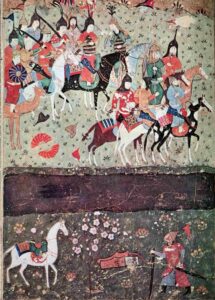The nomadic people of Eurasia left behind rich treasures that rival those of sophisticated settled societies. Many of these precious items, which can be seen today in museums around the world, were made of gold, bronze, and silver with unique animal-inspired designs. They served decorative, practical, ritual, and spiritual purposes and were widely exchanged along the continent’s trade routes.
In this interview (originally published in August 2023), Dr. Petya Andreeva from Parsons School of Design, New York, discusses some findings from her research into the decorative and funerary art of Eurasia.

An interview with

Petya Andreeva
Assistant Professor of Asian Art and Design History, Parson School of Design, New School
Petya Andreeva received her Ph.D. from the East Asian Languages and Civilizations Department at the University of Pennsylvania. Her upcoming book entitled Fantastic Fauna from China to Crimea: Image-Making in Eurasian Nomadic Societies, 700 BCE-500 CE will be publsihed by Edinburgh University Press in March 2024. The book draws from her dissertation, Fantastic Beasts of the Eurasian Steppes: Toward a Revisionist Approach to Animal-Style Art which received international recognition in the Best Asian Humanities Dissertation category at the International Convention for Asia Scholars (ICAS) in 2018. Professor Andreeva has broad research interests inlcuding funerary art in China and Inner Asia, arts of the Silk Roads, nomadic material culture, art of Soviet Central Asia, and the global history of ornament. Her main field of research is the cultural and artistic transmissions along premodern trade networks, namely the Silk Roads and their precursor – the Eurasian steppe. She is particularly interested in the display of portable luxury and the formation of collective memory in nomadic communities along the porous borders of sedentary empires (China, Persia and Greece). Her research aims to challenge Euro-centric narratives in the study of decorative and funerary art.
Originally from Bulgaria, she is fluent in Mandarin, Bulgarian, Russian and has a working proficiency in Japanese and Mongolian.
The decorative art of Eurasian nomadic peoples is a great subject to study. Going to the roots of this art, what do you think led to its development and the apparent love for exquisite decorations, given that nomadic people led otherwise simple lives and had to travel a lot?
This is a really important question. Contrary to traditional narratives that highlight the “monumentality” of sedentary empires (palaces, large reliefs etc.), early pastoral societies left behind numerous treasures that rival those of their settled neighbors. The majority of these valuable items are adorned with animal-inspired designs, which feature composites or what I call zoomorphic junctures. These are highly conceptual designs that we sometimes overlook, as we tend to focus on the large amounts of gold found in nomadic tombs and hoards. In steppe imagery, it is common to encounter an animal body combining deer antlers, a raptor’s beak, the mane of a feline, and the snout of a wolf—all elaborately rendered on gold surfaces via casting, hammering, soldering, and a number of other sophisticated techniques.
Species tend to be represented metonymically and then fused together; the resulting animal bodies are inverted in conceptually interesting ways that we would not normally encounter elsewhere in the ancient world. In my work, I have argued that these counterintuitive animal images were inspired by both political and ecological factors that are rooted in nomads’ exposure to diverse ecosystems and their anxiety about the inexplicable whims of nature. Environmental challenges led to economic concerns, which in large and reluctant nomadic alliances would have jeopardized the position of the super-elite (what I call the “elite nucleus”). As they were exposed to different ecological conditions at least semiannually, nomads started to visualize the fauna on which they staked their lives as being perpetually in flux—hence the hybrid, unstable bodies we encounter in the so-called “animal style” of the steppe. Eurasian nomads are still rarely mentioned in theoretical discourses on design concepts, but their image system was incredibly intriguing and complex and very indicative of how climate change and political instability might affect people’s creative products.
Their image system was incredibly intriguing and complex and very indicative of how climate change and political instability might affect people’s creative products.
Across the five-thousand-mile Eurasian steppe network, we find a great number of metalworks—mostly gold and bronze (less often silver)—as well as felt textiles. These meticulous arrangements give us better insights into the curation and decorative scheme of the mortuary space, instead of just a glimpse into the individual objects. We often encounter images of the same hybrid animal body on the jewelry adorning the body, and on the textiles enveloping the floor of the tomb: in the Pazyryk culture of the Altai, for instance, bird heads attached to deer antlers are a particularly ubiquitous motif seen across media and modes of making. Animal-style designs were highly transferable and malleable, and so we encounter them on metalwork, woodwork, bone carving, felt, and other materials consistent with the nomadic lifestyle.




Most nomadic tombs contain portable items of great value. Many of these were used during the tomb occupant’s life on earth as currency exchanged for safe passage, for strategic commercial transactions with sedentary neighbors like China, or as a symbol of political clout within the diverse nomadic alliance. But once arranged inside the tomb and attached to the deceased’s body, they entered a new lifecycle and took on new functions. This is to say, what we often refer to as “decorative art” might also have fulfilled other important roles in political and economic decision-making in nomadic societies. During a burial, the body of the deceased noble and probably some parts of the barrow would have been exposed to the scrutiny of an excitable and possibly highly divided audience of members of different clans—and so the curatorial approach to the space and the body’s adornment were of paramount importance. The glittering gold would have been viewed by both allies and potential rivals of the deceased leader just as a new power vacuum opened in a relatively unstable confederation. And, ultimately, fluency in this complex visual language became a political tool used by a very small elite nucleus to define their agency in the reluctant alliance of different nomadic groups. It also helped the elite to manufacture collective bonds in these rather unstable nomadic confederations.
When we imagine the luxury and decorations of the Eurasian nomads, we mostly think of Scythian treasures and animal style. Can you elaborate on what happened later and how this art developed?
Animal style flourished along a far more extensive geographical, cultural, and temporal expanse than one might expect. It was present in every cultural sphere on the steppe, as well as adjacent regions, from the frontiers of China to the Hungarian plain. Indeed, the so-called Scythians have often been designated as the primary creators and carriers of the animal-style tradition. But there are a few caveats worth mentioning here. While it retains some usefulness as a category, “Scythian” has become something of an umbrella exonym in itself, often applied arbitrarily to ethnically or culturally unrelated nomadic groups on the Eurasian steppe. We often think of Peter the Great’s Siberian collection in the State Hermitage Museum as containing classic examples of “Scythian art,” but the objects are of unclear provenance and came into the tsar’s collection from plundered Siberian tombs at a time when looting and illegal excavation were especially frequent occurrences in southern Russia. There are, of course, a great number of Pontic Scythian tombs that fit Herodotus’ descriptions, many of which are in Eastern and Central Ukraine. Because of the intensive Greco-Scythian interactions in this region, we see a departure from zoomorphism and a higher proclivity for depicting human figures in these nomadic works.


But while we mostly associate animal-style design with Eurasian nomads—be they Scythians, Xiongnu, Donghu, Sarmatians, or otherwise—it is also true that these animal-inspired designs penetrated the porous boundaries of neighboring sedentary empires like China and Persia. This is significant because for far too long, nomads have been viewed as the passive recipients of the “enlightened” traditions and inventions of China, Persia, and Greece, or as mere intermediaries between those empires. Now we know that steppe-style objects appeared in the aristocratic tombs of major Eurasian empires, whose elites wanted to showcase their worldliness and access to the most “unconquerable” of domains. Indeed, while both the Greeks and the Chinese continued to indulge in labeling the nomadic Other as “barbarian” in their writings, their funerary and commercial practices tell a rather different story. As long as it did not overshadow the local, showcasing nomadic gold was a new status-defining token. This is why we see nomadic-style plaques and buckles in locations as distant as the tomb of the King of Nanyue in South China and China’s Lelang outpost in modern-day North Korea in the second century BCE.
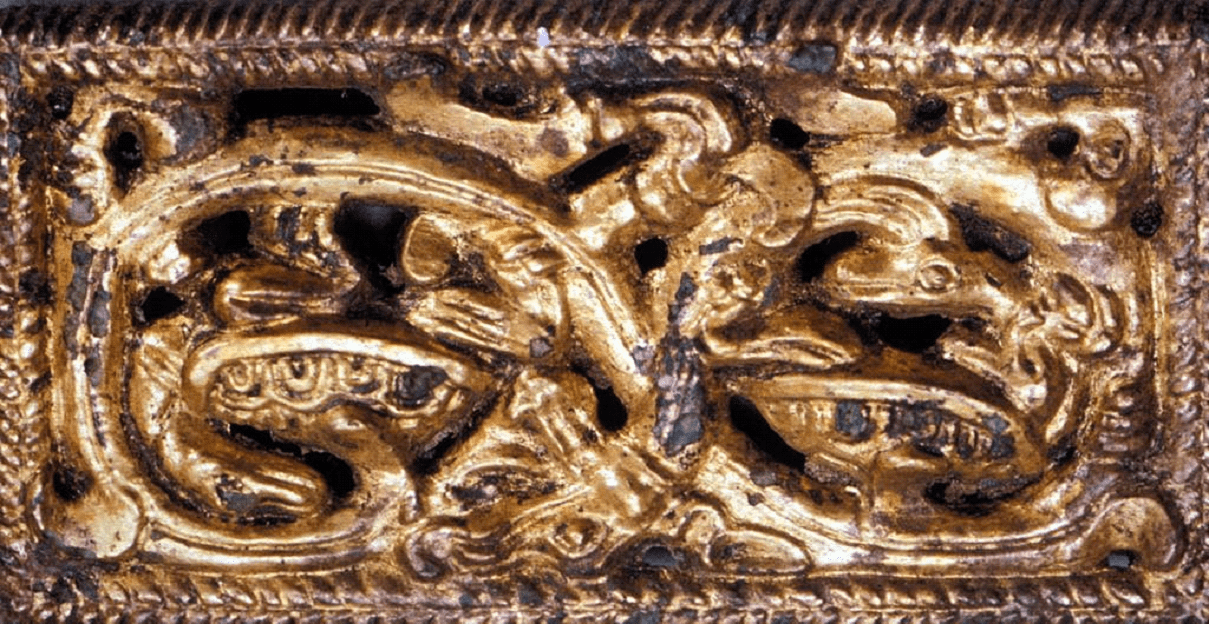

In my forthcoming book, I study the politics behind the adoption of such motifs and objects by societies that, for the most part, viewed themselves as enemies of or superior to the steppe nomads. I even go so far as to suggest that grand structures in Achaemenid Persia, like the Apadana palace in Persepolis, feature animal combat scenes that were inspired by Scythian and Saka decorations and might have involved nomadic labor. This makes sense considering the defeats the Persians suffered at the hands of the Scythians (recorded by Herodotus) and all the Scythian prisoners of war taken by Darius. The Persians sort of “delimited” animal style in the grandness of the Persian relief: animal style was there to denote control over the “Barbaric Other,” but it did not feature prominently enough to overshadow the grandeur of the local format. This visual and political strategy is what I refer to as “governable Otherness.” Visual references to the Nomadic Other were helpful political tools as long as they were inscribed in a local monumental format.
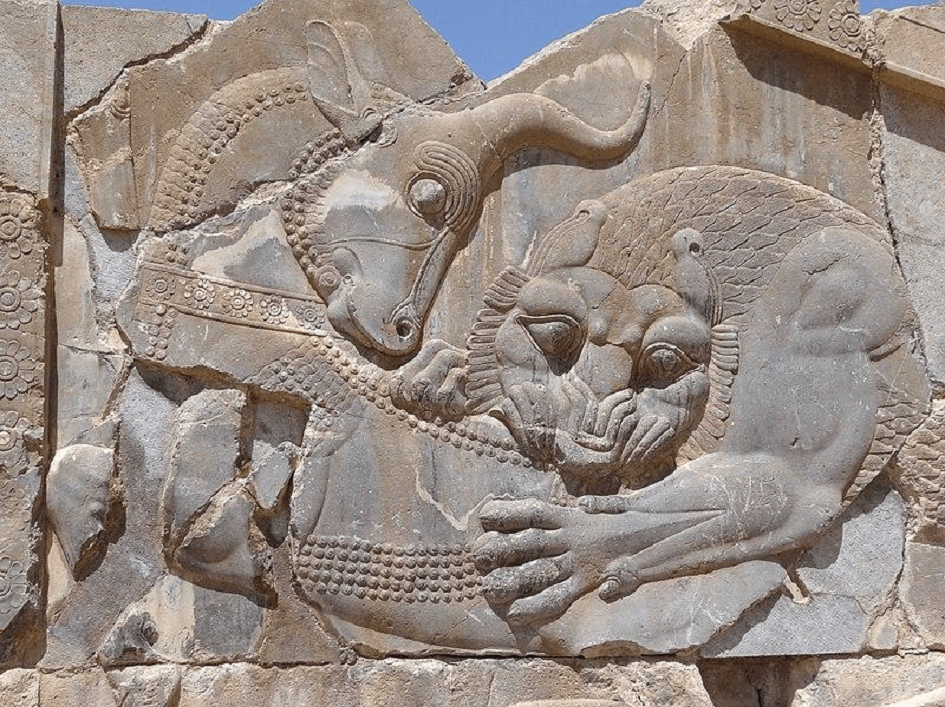
Finally, animal style endured for much, much longer than previously acknowledged. We see traces of Iron-Age nomadic design in later periods, including some of the gold of the Tibetan empire in the seventh and eighth centuries—recently excavated examples of Tibetan gold come from Dulan county in Qinghai province in northwestern China. The Komi and Udmurt settlements in Western Siberia and the Ural lowlands have also yielded some great examples of possible “offshoots” of Iron-Age animal style (known in the Russian literature as “Permian animal style”), most dating to between the fifth and tenth centuries. I would argue that in the Migration period, these Permian motifs reached northern Europe, where they were subsequently incorporated into the designs of the Germanic tribes.
My most recent work has focused on an even later resurrection of animal style. In the westernmost segment of the Mongol empire, a return to this long-forgotten decoration might have been politically motivated. The Mongols of the Golden Horde had to reconcile two distinct identities: that of a worldly, astute trade partner and that of the legitimate successor to an uninterrupted, centuries-old nomadic tradition. It is therefore not surprising that some ancient animal-style designs feature prominently in the arts of the Golden Horde, which was centered on the Western steppe.
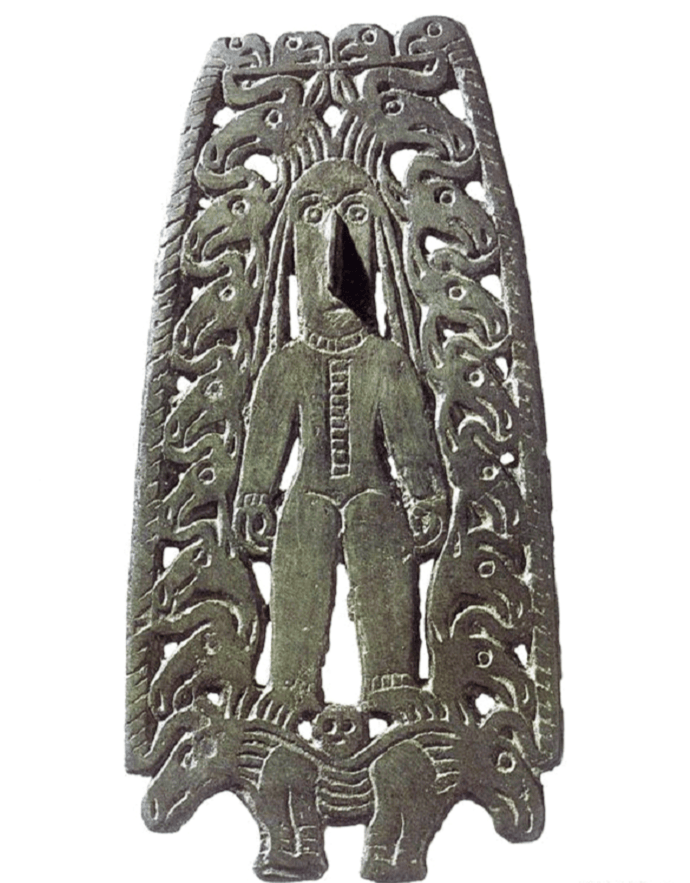
Trade was obviously a major factor in the exchange of goods. Can you tell us a little more about how trade influenced the value of these goods?
Yes, trade was certainly an important factor in the dissemination of animal-style art (and design). We can identify a few “commercial hotspots” on this steppe route, which was a precursor to the more widely known “Silk Road” network. On the western end, there were the commercial interactions between the Greeks and the Scythians (and later the Sarmatians). There is great evidence of this in the diverse inventories of royal Scythian tombs in Crimea. Herodotus mentioned cities like Olbia and Chersonesos, and in fact most of the Bosporan Kingdom centered around Crimea, a strategic trade center and hotbed of cross-cultural encounters. The archaeological record supports this. On the easternmost end of the steppe route, China bought into the increasingly lucrative nomadic market from around the fourth century BCE, even before the emergence of the first nomadic empire (the Xiongnu). There are textual records that the first emperor of the Qin Dynasty rewarded a stockbreeder in northern China who facilitated trade with the Rong nomads. We know that Chinese imperial workshops started to produce animal-style goldworks and export them to the nomadic market, receiving much-needed livestock in return. I have previously suggested that China was probably the only power player in Eurasia between the fifth and third centuries BCE to truly see and realize the great potential of the nomadic market. How they did that so successfully is a more complicated question that I explore in my book, but a major reason might be that Chinese art had been entirely zoomorphic from its inception, and likewise relied on abstract and composite animal designs. In other words, Chinese artisans were primed to embrace the zoomorphism of their nomadic clientele, whereas the Persians’ and Greeks’ designs concepts were much more reliant on human figures and narratives.
Is there any spiritual meaning to these decorations? Are they still heavily defined by an animal spirit?
Several trail-blazing studies have indeed proposed that the emergence of certain design motifs, chief among them the reindeer antler in South Siberia, might have been inspired by shamanistic practices. Shamanism is often the “go-to” explanation for the artistic innovations of ancient societies in Siberia and Mongolia. I certainly think that there is merit to these interpretations and do not reject the search for “meaning” behind these animal motifs. But I myself am more interested in the function (rather than meaning) of animal-style designs. This is necessary because my studies tend to adopt a “macro” perspective: I am dealing with an enormous geographical and cultural expanse inhabited by many diverse nomadic societies. There must be a reason for the incredible transferability and longevity of certain design idioms (like the zoomorphic juncture, for instance)—how did tropes like the bird with deer antlers travel so swiftly from the northern Chinese periphery to eastern and central Europe? It is highly unlikely that the motif meant the same thing in every single micro-zone on the Eurasian steppe route. So we have to ask a different question: could it be that these zoomorphic designs fulfilled a similar function in all these different nomadic confederations, which had some political and ecological concerns in common? The animal images in question present an alternative, skewed version of ecological reality. They feature fragmented, dissected, and reconfigured animal bodies, which are based on the signature anatomical parts of various real-life beasts—from stags to wild goats to snow leopards. These unstable anatomies, so to speak, indicate a very particular response to changes in the ecological environment, including environmental shifts bigger than just the seasonal migration patterns, which had profound consequences for many nomads. With this idiosyncratic image system, nomadic makers visualized an alternative and more manageable ecological system that was at their disposal and mercy. This was perhaps a coping mechanism that enabled them to deal with real-life environmental and political anxieties. Look, for instance, at the so-called Golden Man of Issyk in Kazakhstan, or the no less awe-inspiring Golden Woman of Taksai. Such warrior suits consist of thousands of elaborate gold adornments, most featuring animal-style designs. The wearer was seen as the master of this newly formed fantastical biota, and this helped them reaffirm their legitimacy to an awestruck audience. In short, animal images were much more than mere spiritual symbols or totems; they also served as important political tools for establishing a leader’s legitimacy. The body became praxis through which important political messages could be sent to the viewers of the burial-turned-spectacle.
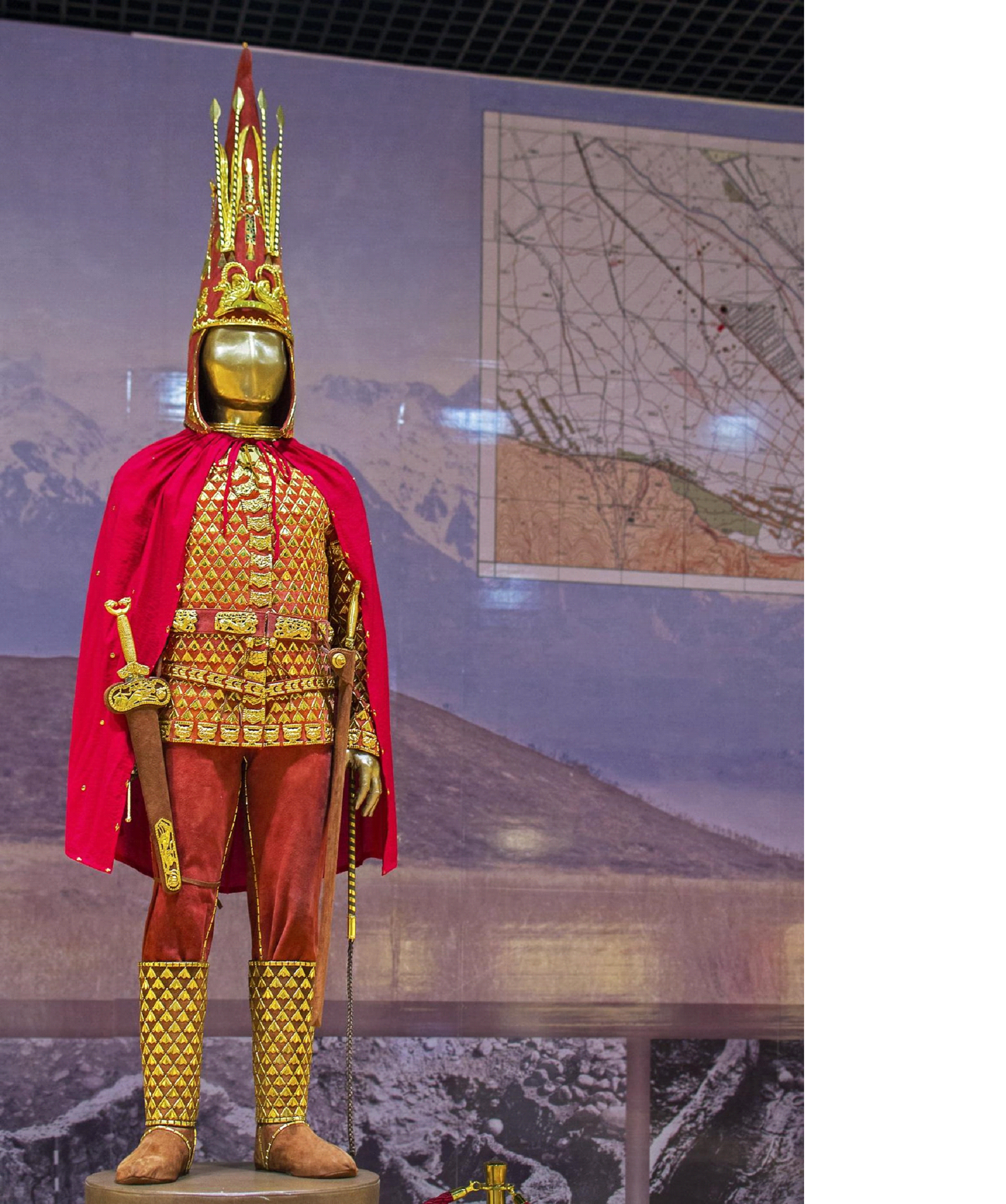
Can you tell us about funerary art in China and Inner Asia? What items would usually go into a tomb and why?
I actually started my academic career as a Sinologist, and continue to work in both Central Asian and Early China studies. I have gained many valuable skills from my extensive Sinological training. My interest in Central Asia started in graduate school, where my professors inspired me to start exploring China’s relationship with its neighbors and long-distance trade partners, including the steppe people on its frontier, which Chinese texts often label as barbarians. Early Chinese chronicles tend to be the most detailed, even if not always reliable or nuanced, in their ethnographies of steppe peoples. As I mentioned earlier, I was curious to find out why we often find animal-style plaques in the inventories of early Chinese tombs.
In the Bronze Age, Chinese burials feature bronze ritual vessels as the highlights of their inventories. In the fourth and third century BCE, many bronze casters also gained skill in goldsmithing, at Beikangcun near Xi’an, and there is an excavated tomb of a Chinese bronze caster from the Warring States who was buried with tools and matrices for the production of both nomadic animal-style objects and Chinese ritual bronzes. Chinese burials from the Han dynasty (third century BCE to third century CE) embrace a more diverse repertoire. They tend to have elaborate murals featuring cosmological guides to the souls of the deceased, procession scenes, directional animals, and Confucian and Daoist narratives, among other images. Some members of the imperial family wore extremely rare and luxurious “jade suits”—burial garments made of hundreds of small jade pieces joined by gold wire or silk thread. This opulent personal adornment is in some ways reminiscent of the golden men and women of Kazakhstan.
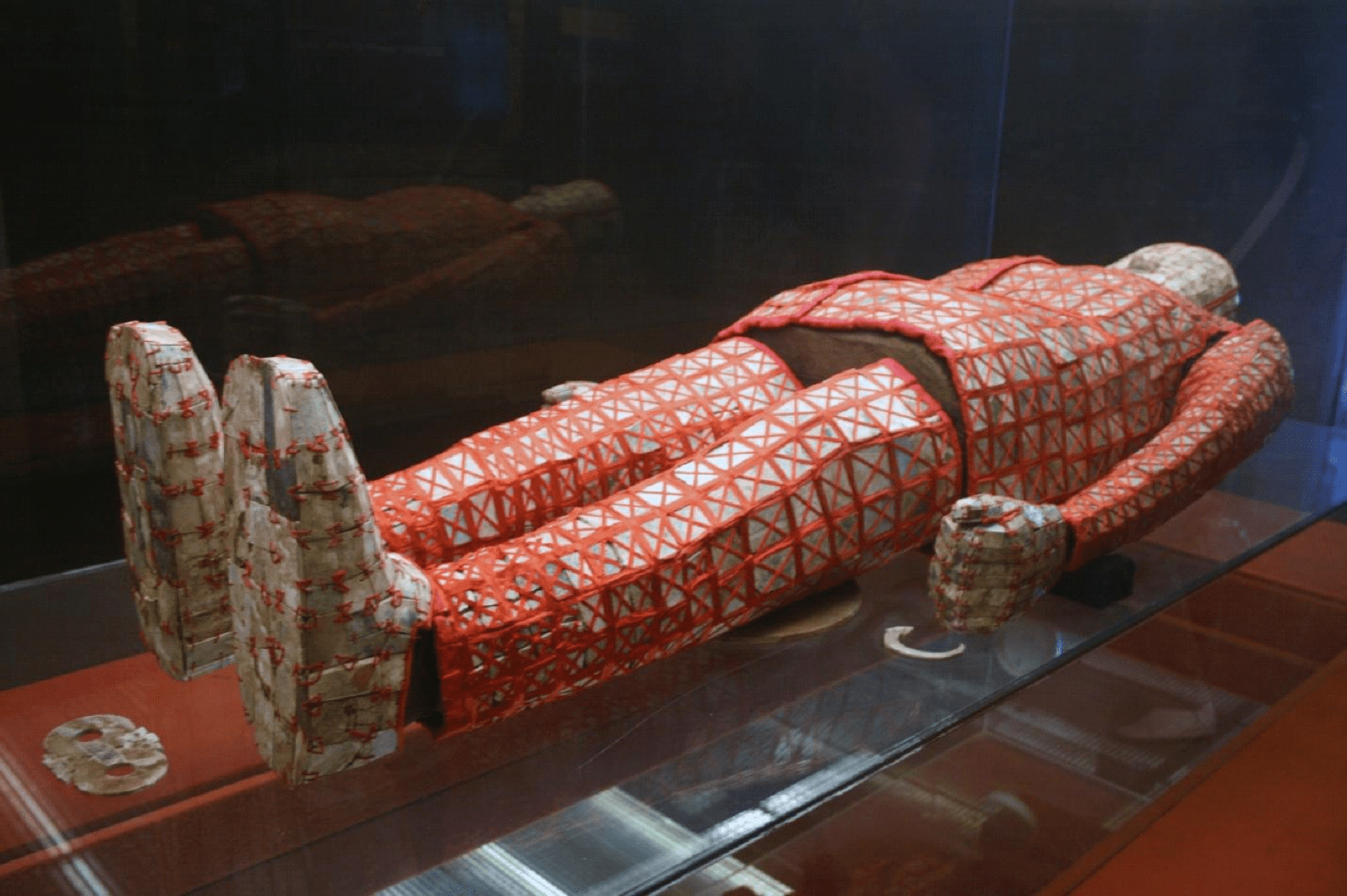
Chinese tombs from the Han dynasty also tend to feature mountain-shaped incense burners, bronze mirrors, lacquer items, and “mingqi” spirit articles (architectural models, figurines of dancers, acrobats, servants, etc.). A great number of painted silks have also been found in Han dynasty burials. My all-time favorite tomb to teach and study is the famous Mawangdui burial complex of noblewoman Lady Dai and her family. The lacquer, silks, and brocades found here are really of top-notch quality and point to the ways aristocrats in China visualized and “regally ensured” their afterlife. Food vessels and even chopsticks, as well as cosmetic boxes – all made of lacquer—have been discovered there.
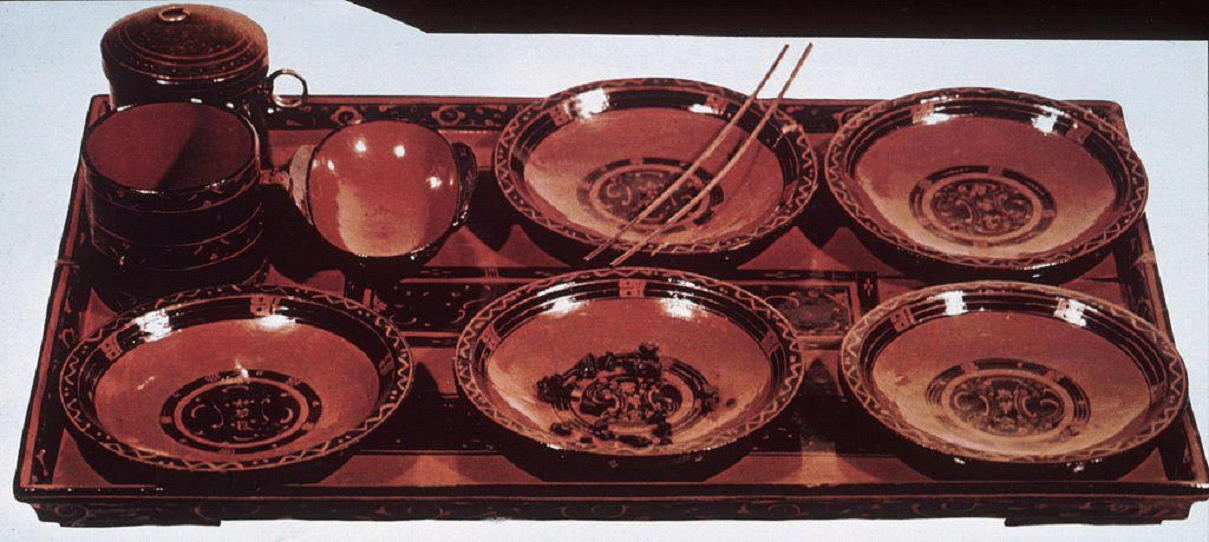
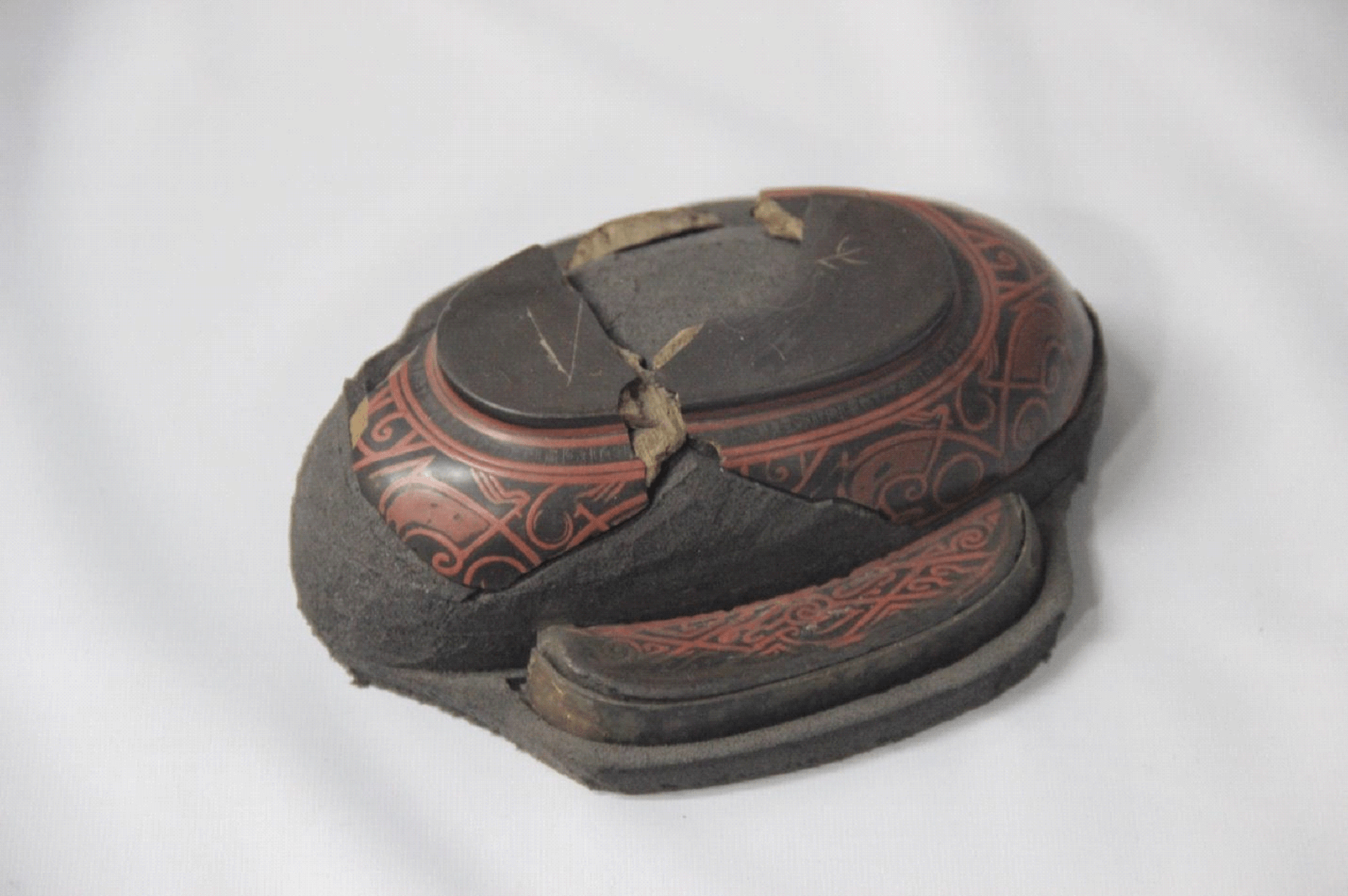
Even more interesting is the appearance of lacquer, bronze mirrors, and other Chinese imports in the tombs of Xiongnu elites north of the Chinese border. Clearly, diplomatic gifts and intensive trade defined the rather tumultuous relationship between the two entities. To cut a long story short, I am really fascinated by the opportunistic reciprocity between China and its northern neighbors—various steppe groups that, over time, became a growing threat to China’s hegemony in North Asia.
Your forthcoming book is entitled Fantastic Fauna from China to Crimea: Image-Making in Eurasian Nomadic Societies, 700 BCE-500 CE. Can you tell us about this research?
I am thrilled that my first monograph is already under production with Edinburgh University Press and is scheduled to be published in March 2024. The book builds on my dissertation and explores hundreds of objects from every micro-zone on or adjacent to the Eurasian steppe route: the Mongolian-Manchurian grasslands, South Siberia, the northern Korean peninsula, the Kazakh steppes, the Ural lowlands, the North Caucasus, Crimea, and parts of the Hungarian plain. The main argument of the book is that due to concerns over political legitimacy, the elite nucleus in every nomadic alliance—from the Pontic Scythians and Sarmatians to the Xiongnu—embraced animal-style design as their de facto visual rhetoric in order to construct collective bonds in otherwise reluctant political alliances that were structured not around ethnic ties but rather around shared geopolitical goals and enemies. I also seek to understand why and how animal style entered the aesthetic systems of sedentary empires like China and Persia. Steppe nomads were consistently “othered” by their geopolitical enemies, but they were also increasingly recognized as worthy opponents and potential trade partners that power players like China needed to interact with if they wished to expand their economic influence in Eurasia. I am interested in the visual and material manifestations of this reluctant symbiosis, which never resulted in true reciprocity yet shaped much of the political landscape of Central Eurasia.
Steppe nomads were consistently “othered” by their geopolitical enemies, but they were also increasingly recognized as worthy opponents and potential trade partners
My second inquiry throughout the book is inspired by one of my academic idols, Ernst Gombrich: I am fascinated by the psychology and logistics of image-making. I am especially interested in the factors that contribute to abstraction. At what point do designs become “abstract” or “semi-abstract”? Early nomadic images do not fully embrace abstraction and are not entirely divorced from ecological reality, even if they feature fabricated hybrids. This changes dramatically with the later and more powerful nomadic confederation of the Xiongnu, who were well on their way to forming the first-ever nomadic empire and needed more standardized designs to make them more legible to various trade partners and rivals across an increasingly global Eurasia. In the book, I link abstraction to political and economic agendas as well.
I have invested years of research into this project, including fieldwork in Kazakhstan, Russia, China, Mongolia, South Korea, and my home country, Bulgaria. It was important to me to look at as many primary sources as possible from the cultural zones in question because of the study’s unprecedented geographical scope. To that end, the materials I present are combined with textual sources in Modern and Classical Chinese, Japanese, Russian, Mongolian, and Bulgarian.
What legacy did this decorative and funerary art leave for us today? Do we see it in contemporary art or commercial goods, fashion, jewelry, or furniture?
I really appreciate this question because far too often, the arts of ancient societies are viewed in a historical vacuum, as detached from modern-day developments, when in reality, they provide important antecedents and lessons for contemporary societies. This is especially true in the case of pastoral nomads, whose lifestyles can certainly add to our present conversations around sustainability and efforts to combat climate change. Also, the relationship between images, politics, and manufactured collective memory in these ancient nomadic confederations is quite relevant to present-day discourses around nationalism, borders, and cross-cultural exchange.
Traces of animal-style art have endured to this day. We certainly see the reliance on metonymically conveyed animal bodies in the textile production of much of Kyrgyzstan, Kazakhstan, parts of Xinjiang, and Mongolia today. I am thinking of the “shyrdak” and “ala kyiz” felts that one finds in many Central Asian bazaars. Producing these stitched and colored felts is a very labor-intensive collective process, and the skills behind these lived practices are usually transmitted from mother to daughter. Many of these traditional felts feature abstract deer antlers, which, interestingly can be found on much of the Pazyryk textile corpus from the Altai Mountains all the way back to the fourth century BCE. Clearly, this penchant for conveying animals through their antlers, beaks, horns, or other representative body parts (in a sort of “synecdoche”) can be traced back to the animal-style period.
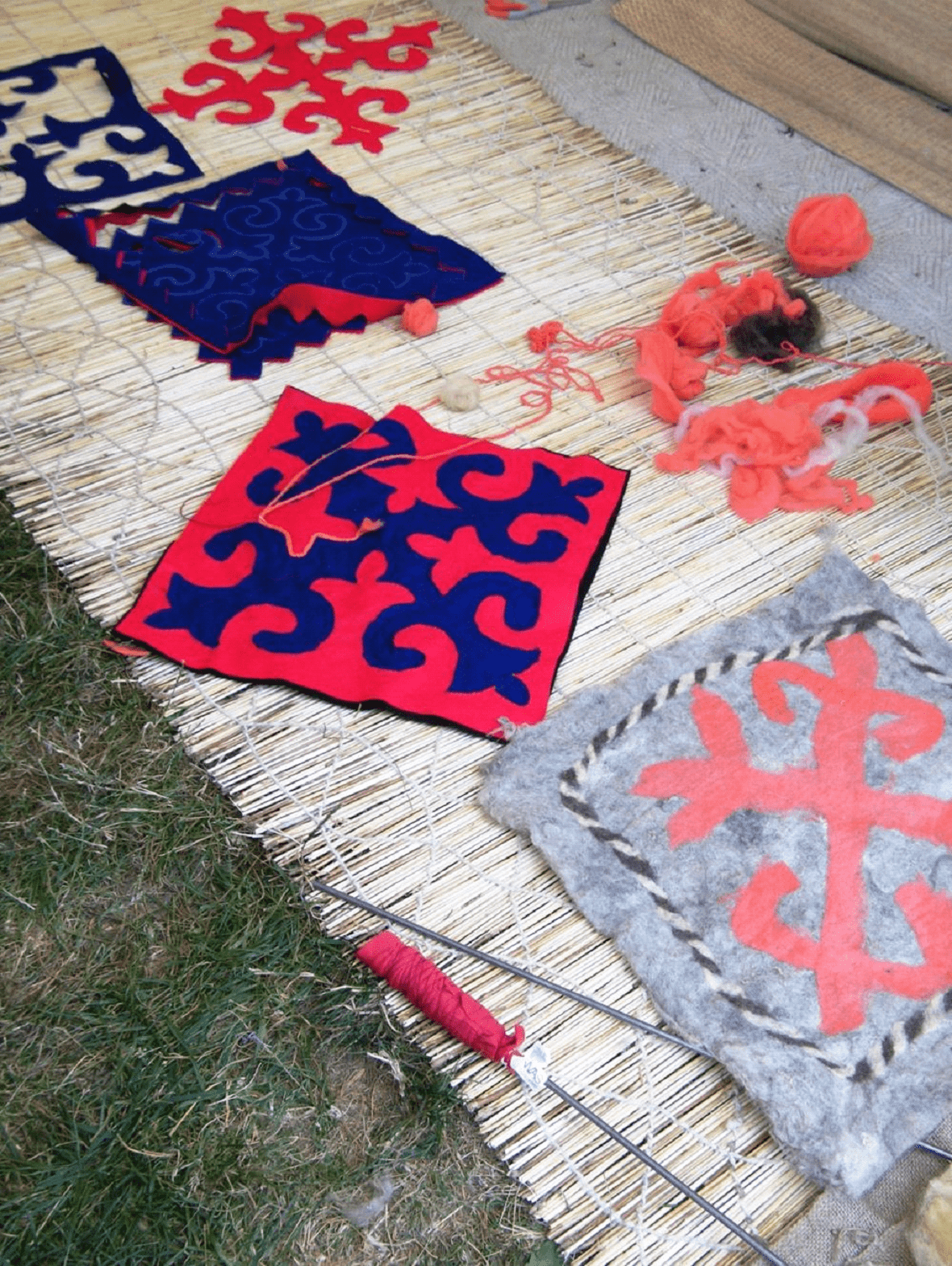
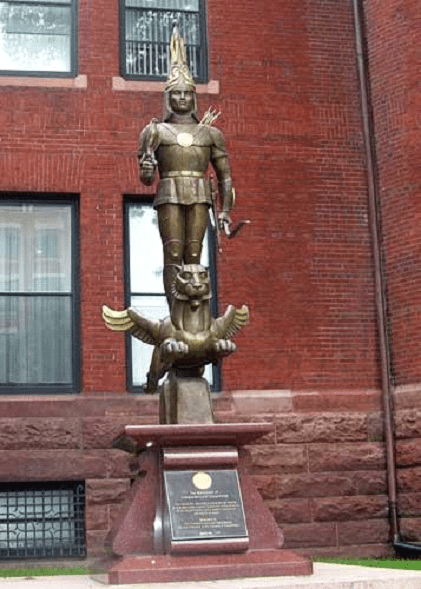
I am also reminded of how animal-style design has been interpreted in Kazakh fashion in recent years. A great number of amazing designers from Kazakhstan have adopted references to ancient nomadic motifs in their own takes on “national costume,” reinterpreting deer antlers, goat horns, and other animal-inspired motifs through a modern lens, as well as drawing on the traditional manipulation of felt and fur. One can hardly overlook the famous Golden Men (and Women) of Kazakhstan. At least six such figures have been excavated from various parts of Kazakhstan since 1969. Many modern silhouettes in couture fashion in the country are inspired by the elongated and sumptuous figure of the Golden Man. So ingrained are these phenomenal discoveries in the collective consciousness of Kazakhstan that one can even find a statue of the Golden Man standing on a winged lion in front of the Kazakh embassy in Washington, DC (and its counterpart on Republic Square in Almaty).



